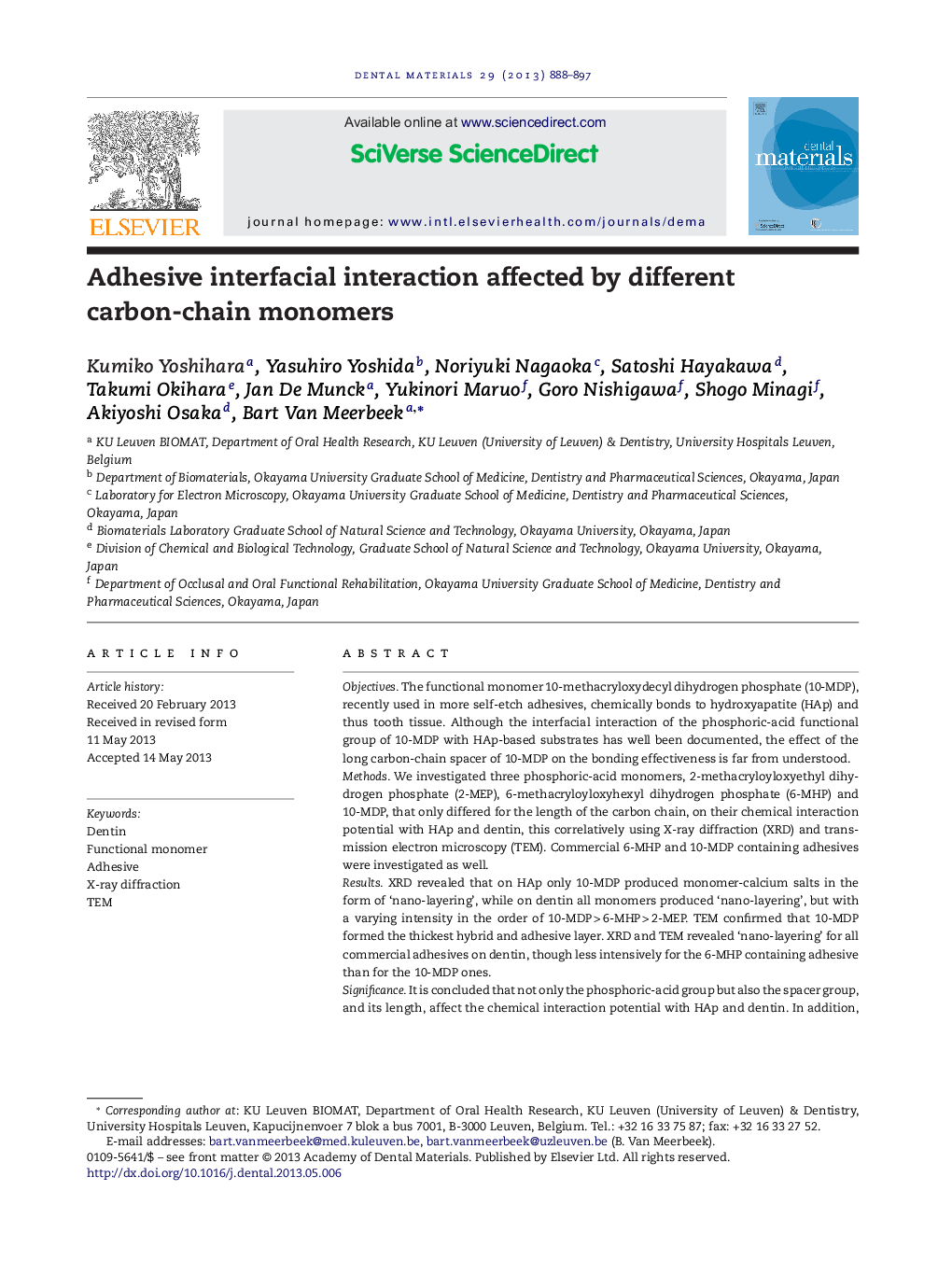| Article ID | Journal | Published Year | Pages | File Type |
|---|---|---|---|---|
| 1421264 | Dental Materials | 2013 | 10 Pages |
ObjectivesThe functional monomer 10-methacryloxydecyl dihydrogen phosphate (10-MDP), recently used in more self-etch adhesives, chemically bonds to hydroxyapatite (HAp) and thus tooth tissue. Although the interfacial interaction of the phosphoric-acid functional group of 10-MDP with HAp-based substrates has well been documented, the effect of the long carbon-chain spacer of 10-MDP on the bonding effectiveness is far from understood.MethodsWe investigated three phosphoric-acid monomers, 2-methacryloyloxyethyl dihydrogen phosphate (2-MEP), 6-methacryloyloxyhexyl dihydrogen phosphate (6-MHP) and 10-MDP, that only differed for the length of the carbon chain, on their chemical interaction potential with HAp and dentin, this correlatively using X-ray diffraction (XRD) and transmission electron microscopy (TEM). Commercial 6-MHP and 10-MDP containing adhesives were investigated as well.ResultsXRD revealed that on HAp only 10-MDP produced monomer-calcium salts in the form of ‘nano-layering’, while on dentin all monomers produced ‘nano-layering’, but with a varying intensity in the order of 10-MDP > 6-MHP > 2-MEP. TEM confirmed that 10-MDP formed the thickest hybrid and adhesive layer. XRD and TEM revealed ‘nano-layering’ for all commercial adhesives on dentin, though less intensively for the 6-MHP containing adhesive than for the 10-MDP ones.SignificanceIt is concluded that not only the phosphoric-acid group but also the spacer group, and its length, affect the chemical interaction potential with HAp and dentin. In addition, the relatively strong ‘etching’ effect of 10-MDP forms more stable monomer-Ca salts, or ‘nano-layering’, than the two shorter carbon-chain monomers tested, thereby explaining, at least in part, the better bond durability documented with 10-MDP containing adhesives.
